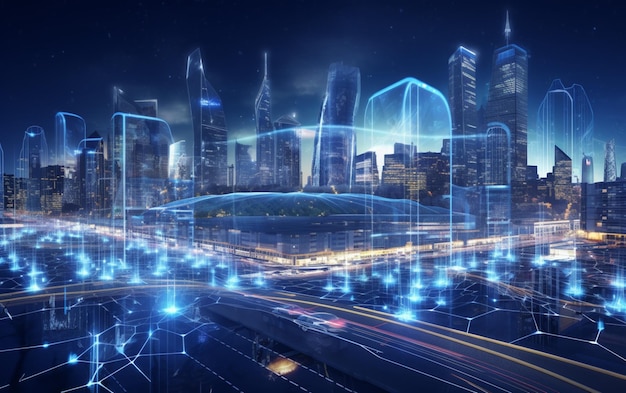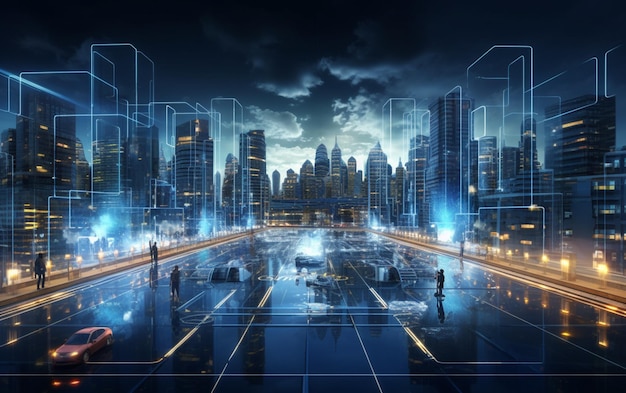Urban centers worldwide are embracing artificial intelligence (AI) to transform infrastructure, enhancing efficiency, sustainability, and livability. From predictive maintenance to intelligent traffic systems, AI is reshaping city landscapes. This article delves into the multifaceted applications of AI in urban infrastructure, highlighting real-world implementations and future prospects.
A. Intelligent Traffic Management
Traffic congestion is a persistent challenge in urban areas. AI offers solutions through:
1. Adaptive Traffic Signals
Google’s Project Green Light utilizes AI to optimize traffic light timings, reducing stops by 30% and emissions by 10% in cities like Jakarta and Seattle .
2. AI Dashcams for Road Monitoring
Ahmedabad’s Municipal Corporation deploys AI-powered dashcams on municipal vehicles to detect potholes, traffic violations, and other anomalies, transmitting real-time data to control centers .
3. Predictive Maintenance
Tokyo’s railway system employs AI to analyze sensor data, predicting maintenance needs and preventing accidents .
B. Smart Waste Management
Efficient waste management is crucial for urban sustainability. AI contributes through:
1. Sensor-Enabled Bins
In Barcelona, AI-powered sensors in waste bins detect fill levels, optimizing collection routes and reducing operational costs by 25% .
2. AI in Recycling
AI systems sort recyclables more accurately, increasing recycling rates and reducing contamination.
C. Urban Planning and Development
AI enhances urban planning by:
1. Analyzing Urban Data
AI algorithms process traffic patterns, public transport usage, and pedestrian movements to optimize city layouts .
2. Digital Twins
Cities like Singapore use digital twins virtual models of urban environments to simulate infrastructure projects, improving planning and disaster management .
3. Generative AI in Design
Tools like ChatGPT assist in city planning by generating design options and analyzing potential outcomes
D. Environmental Monitoring and Sustainability
AI supports environmental initiatives through:
1. Air Quality Monitoring
Urban computing integrates AI with sensors to monitor air pollutants, enabling targeted interventions .
2. Climate Resilience
Cities like Houston and Amsterdam employ AI to manage flooding and heat islands, enhancing climate resilience .
3. Biodiversity Conservation
AI aids in monitoring urban biodiversity, tracking species, and informing conservation strategies .
E. Public Safety and Security
AI enhances urban safety through:
1. Surveillance Systems
AI-powered surveillance detects anomalies and potential threats, enabling prompt responses .
2. Emergency Response
AI analyzes data to optimize emergency services deployment, improving response times.
F. Energy Management
AI contributes to energy efficiency by:
1. Smart Grids
AI manages energy distribution, balancing supply and demand, and integrating renewable sources.
2. Building Automation
AI systems control heating, cooling, and lighting in buildings, reducing energy consumption.
G. Challenges and Considerations
Implementing AI in urban infrastructure presents challenges:
1. Data Privacy
Ensuring the protection of personal data collected by AI systems is paramount.
2. Equity and Accessibility
Efforts must be made to ensure AI benefits are equitably distributed across all urban populations.
3. Infrastructure Investment
Significant investment is required to develop and maintain AI-integrated infrastructure.











